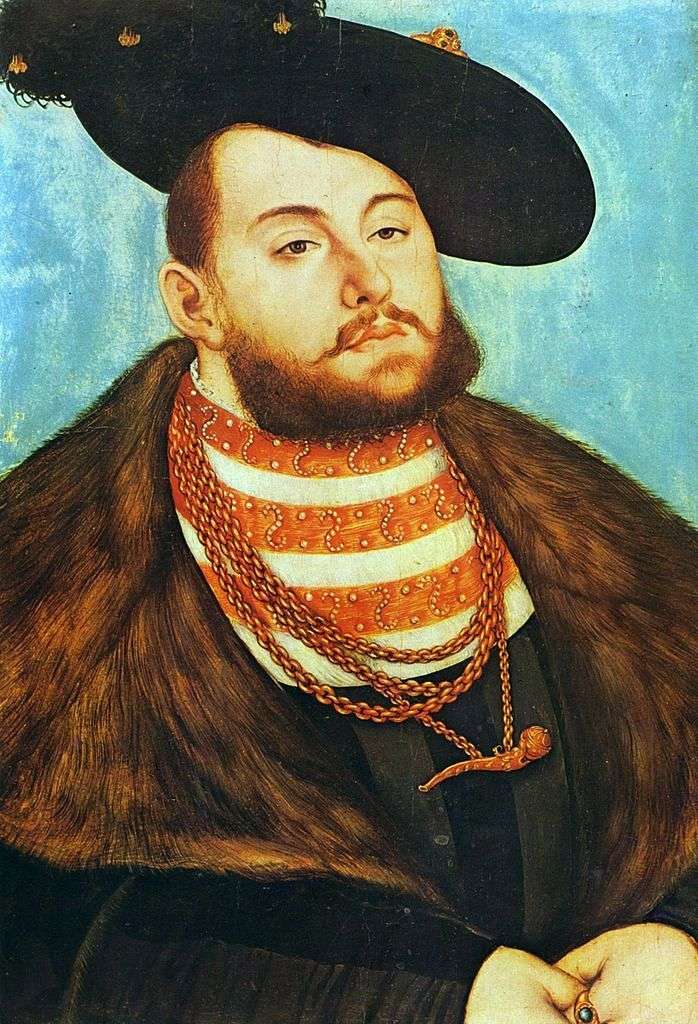
Portrait of Johann-Frederick the Magnanimous. This work is executed in a characteristic style for that period and has undoubted artistic merit.
The name of Johann Friedrich is surprising. The conciliator that the nickname Generous is not so often found in history. In the Middle Ages, European countries often gave nicknames to rulers. This was not offensive, so the people expressed their attitude to the king, the duke, etc. In Germany, for example, there were Louis Pious, Karl Bald, Heinrich Stopivy, and so on. What did Johann-Frederick deserve his fine nickname?
John-Friedrich – the eldest son of the Saxon kurfust Johann the Solid, was born in 1503. It is known about him that after the death of his father he ruled with his brother Ernest. The secularization of the spiritual possessions in Tseitz and Wircene led to a split between him and his cousin Moritz of Saxony. These were difficult times for Germany, the Schmalkald war was going on.
Johann-Friedrich headed the Schmalkalden Union of Lutheran princes. The main purpose of the union was to protect Protestant states from the Catholic League led by Emperor Charles. V.
In the battle of Mühlberg in 1546 John-Friedrich was taken prisoner and deposed. Emperor Charles V sentenced him to death, but then he was pardoned. Johann-Friedrich signed the Wittenberg surrender, according to which the Duke of Moritz received the Saxon Electorate, and John spent several years in prison.
In the battle of Mühlberg in 1546 John-Friedrich was taken prisoner and deposed. Emperor Charles V sentenced him to death, but then he was pardoned. Johann-Friedrich signed the Wittenberg surrender, according to which the Duke of Moritz received the Saxon Electorate, and John spent five more years in confinement. All these years, the artist Lucas Cranach the Elder voluntarily spent in confinement with his former pupil, captured by the kurfyust Johann Friedrich the Magnanimous. Striking nobility!
In order to save his wife and sons, and also to save Wittenberg from destruction, Johann Friedrich recognized the capitulation in favor of Moritz of Saxony. His government resigned.
Meanwhile, Moritz of Saxony in 1552 took advantage of the provisions of the Augsburg Confession, attacked the emperor near Innsbruck and in 1552 freed his cousin. Under the Treaty of Naumburg in 1554, after Johann Friedrich there were lands of the Ernestine line of the Saxon dynasty.
John Friedrich did not possess the ambition aimed at great goals. He was a sovereign, which any country can desire. His personal life and even the life of his court and his camps were distinguished by strict morality. He liked to visit his lands, arranging occasional rural festivities for his subjects, visiting the Wittenberg University, where his sons studied. He was a truthful, hardworking man, firmly defending his rights, full of pure motives, sincere, straightforward in his convictions. Thus completely justified his beautiful nickname the Magnanimous.
John-Frederick the Magnanimous was married to Sibylla of Cleves, which was famous for its beauty and shone at the court of the Elector. The couple had four sons. Johann-Friedrich the Magnanimous died in 1554, a month after the death of his beloved wife Sybil Cleves.
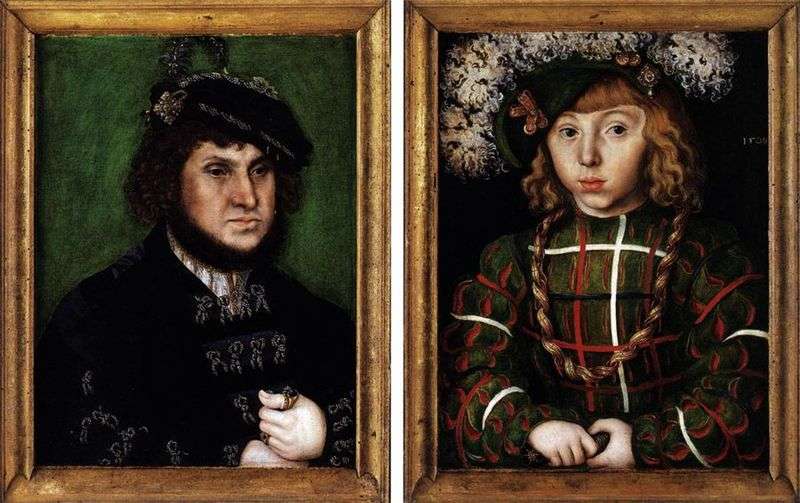 The double portrait of Johann the Tough and his son Johann Friedrich by Lucas Cranach
The double portrait of Johann the Tough and his son Johann Friedrich by Lucas Cranach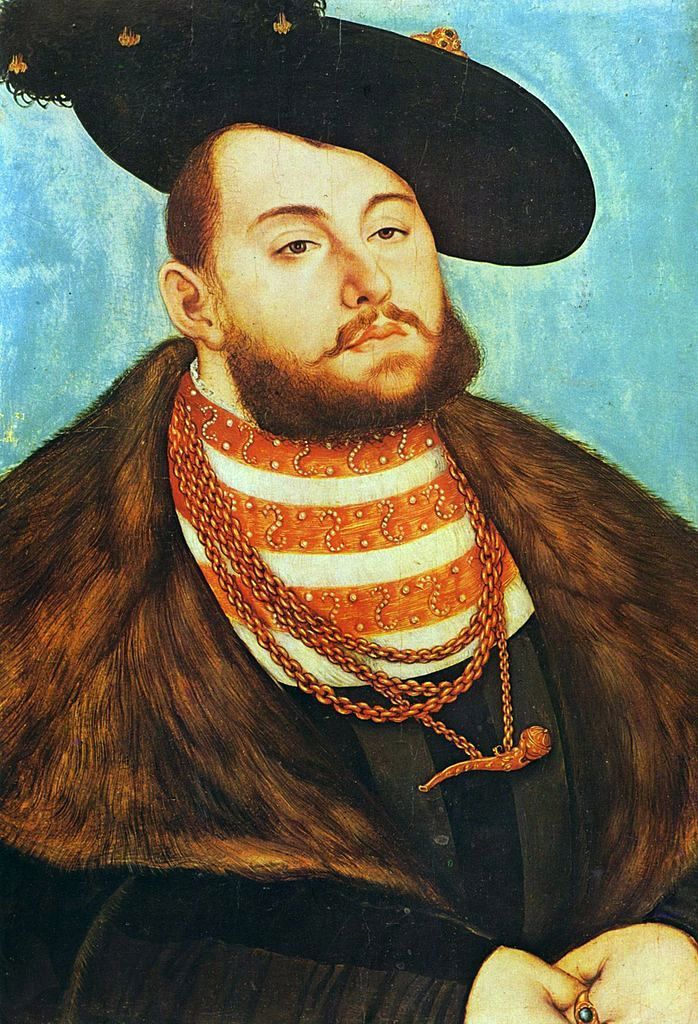 Portrait de Johann Friedrich le Magnanime – Lucas Cranach
Portrait de Johann Friedrich le Magnanime – Lucas Cranach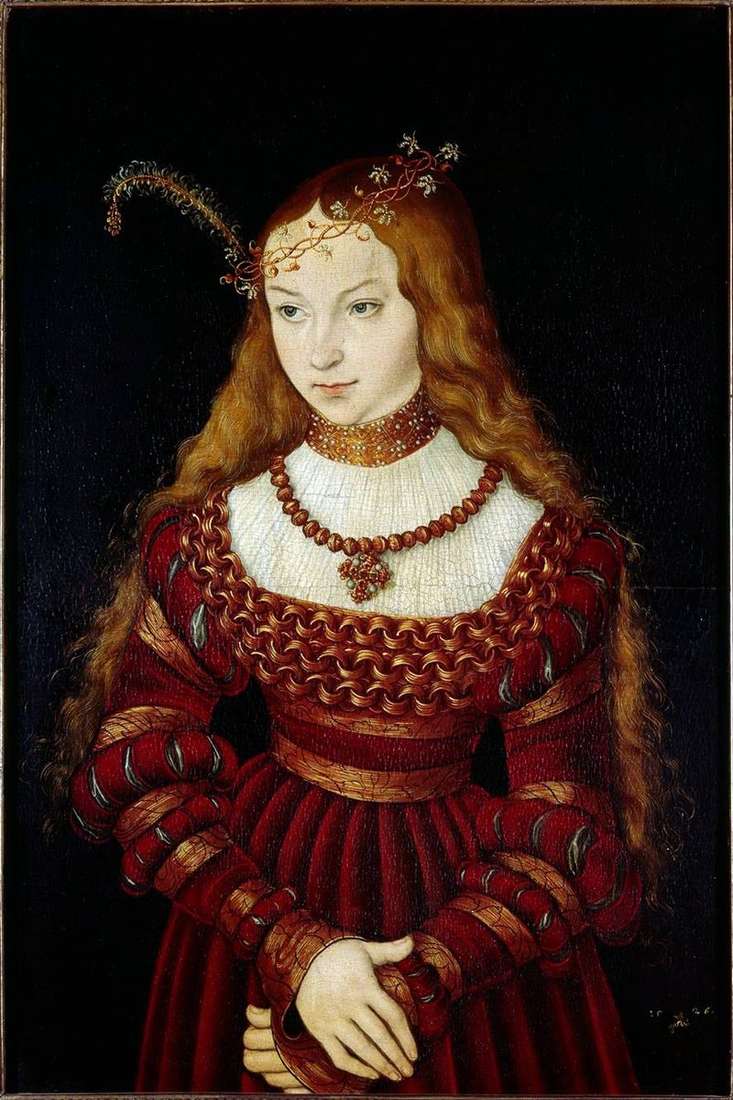 Princess Sibylla of Cleves by Lucas Cranach
Princess Sibylla of Cleves by Lucas Cranach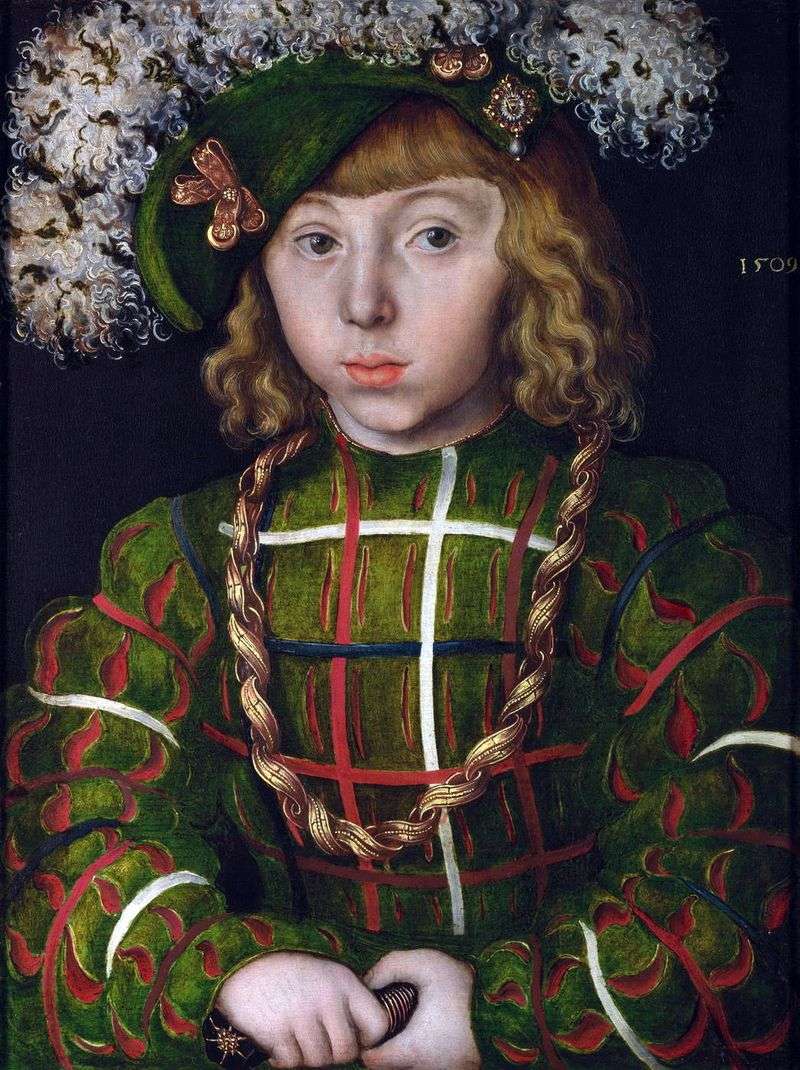 Johann Friedrich the Magnanimous by Lucas the Elder Cranach
Johann Friedrich the Magnanimous by Lucas the Elder Cranach Portrait of Sibylla of Cleves by Lucas Cranach
Portrait of Sibylla of Cleves by Lucas Cranach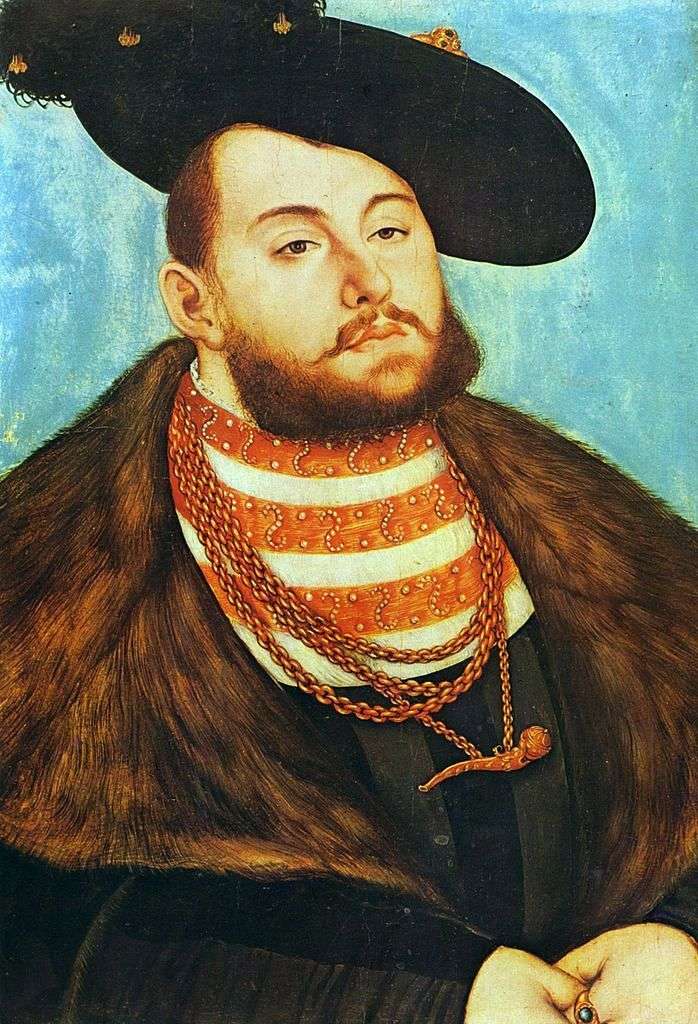 Retrato de Johann Friedrich el Magnánimo – Lukas Cranach
Retrato de Johann Friedrich el Magnánimo – Lukas Cranach Double portrait de Johann le Solide et de son fils Johann Friedrich – Lucas Cranach
Double portrait de Johann le Solide et de son fils Johann Friedrich – Lucas Cranach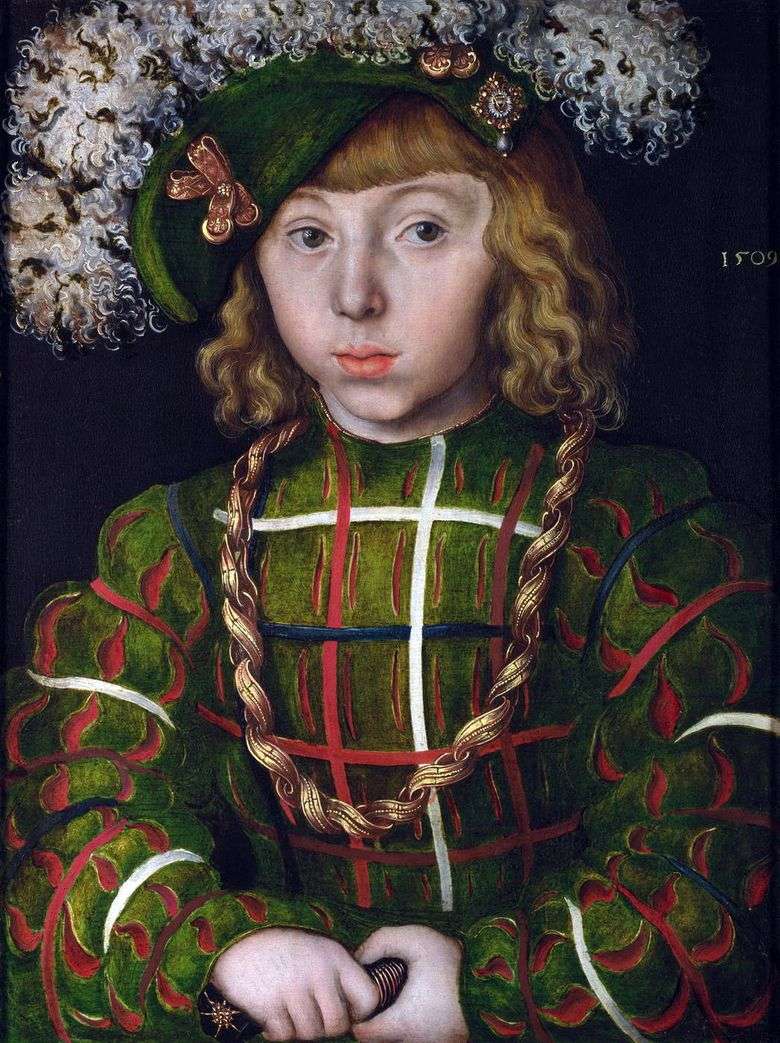 Johann Friedrich el Magnánimo – Lucas el Viejo Cranach
Johann Friedrich el Magnánimo – Lucas el Viejo Cranach